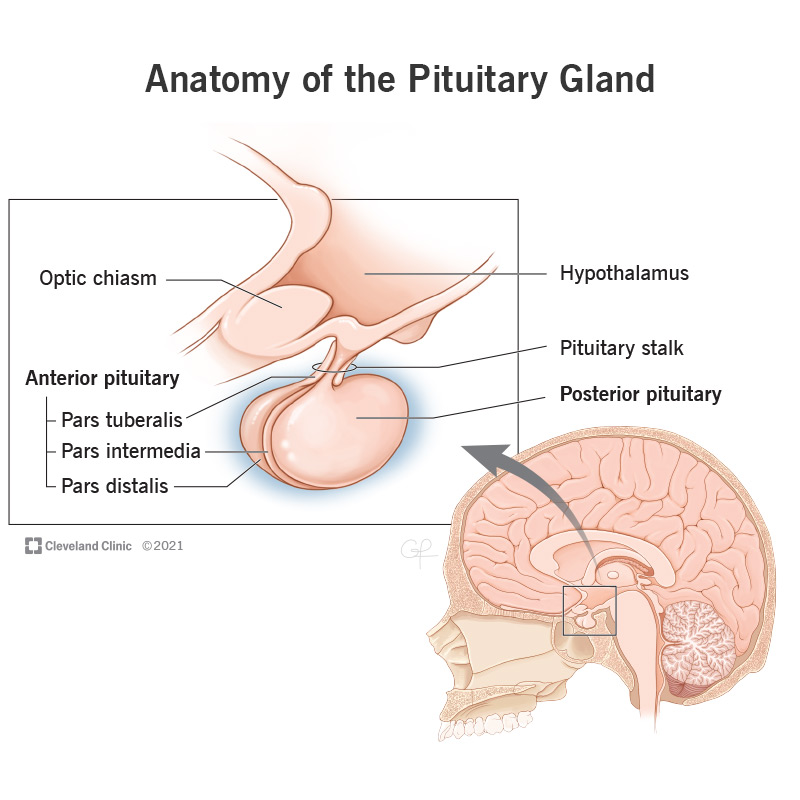Pituitary function studies are essential diagnostic tools used to assess the secretory capacity of the anterior and posterior pituitary gland, helping clinicians diagnose, manage, and monitor disorders affecting the hypothalamic-pituitary axis. These studies involve dynamic and static testing of hormone levels to evaluate the integrity of pituitary and target organ function.

Understanding the Role of the Pituitary Gland in Hormonal Regulation
The pituitary gland, also known as the hypophysis, is a master endocrine gland situated at the base of the brain in the sella turcica. It comprises two major lobes:
- Anterior pituitary (adenohypophysis): Produces hormones such as ACTH, TSH, GH, LH, FSH, and prolactin.
- Posterior pituitary (neurohypophysis): Stores and releases ADH (vasopressin) and oxytocin.
These hormones regulate various physiological functions, including metabolism, stress response, growth, reproduction, and water balance.
Indications for Pituitary Function Testing
Pituitary function studies are typically indicated in the following clinical scenarios:
- Suspected hypopituitarism (partial or complete)
- Evaluation of pituitary adenomas
- Delayed or precocious puberty
- Amenorrhea or infertility
- Unexplained fatigue or weight changes
- Diabetes insipidus symptoms
- Follow-up after pituitary surgery or irradiation
Overview of Pituitary Hormones and Their Target Axes
| Hormone | Secreted by | Target Organ | Function |
|---|---|---|---|
| ACTH | Anterior Pituitary | Adrenal Cortex | Stimulates cortisol production |
| TSH | Anterior Pituitary | Thyroid Gland | Stimulates T3/T4 secretion |
| GH | Anterior Pituitary | Liver, Bones | Stimulates IGF-1 for growth |
| LH/FSH | Anterior Pituitary | Gonads | Regulates sex hormones |
| Prolactin | Anterior Pituitary | Breast | Stimulates lactation |
| ADH | Posterior Pituitary | Kidneys | Promotes water reabsorption |
| Oxytocin | Posterior Pituitary | Uterus, Breast | Stimulates labor, milk ejection |
Static Pituitary Function Tests
Static tests involve single blood samples to measure basal hormone levels. These are useful for evaluating hormonal excess or deficiency at rest.
Common Static Tests:
- Serum cortisol and ACTH
- TSH, Free T4
- GH and IGF-1
- Prolactin
- LH, FSH, estradiol/testosterone
- Plasma osmolality and ADH (for posterior function)
While informative, static tests may not always reflect true hormonal capacity, especially for pulsatile or stress-responsive hormones.
Dynamic Pituitary Function Tests
Dynamic tests involve stimulating or suppressing the pituitary gland to assess reserve capacity and hormonal feedback mechanisms.
Key Dynamic Tests:
1. Insulin Tolerance Test (ITT)
Gold standard for assessing GH and ACTH reserve.
- Insulin-induced hypoglycemia stimulates GH and ACTH release.
- Monitors blood glucose, GH, and cortisol at baseline and intervals.
Contraindicated in patients with cardiovascular disease or seizures.
2. ACTH Stimulation Test
Used to evaluate adrenal insufficiency.
- Synthetic ACTH (Synacthen) is administered.
- Cortisol is measured at 0, 30, and 60 minutes.
3. GnRH Stimulation Test
Assesses LH and FSH response in pubertal disorders.
- GnRH (gonadorelin) is given intravenously.
- LH and FSH are measured over time.
4. TRH Stimulation Test
Used to evaluate TSH secretion and pituitary-thyroid axis.
- TRH administered to stimulate TSH.
- TSH levels monitored at 0, 20, 60 minutes.
5. Water Deprivation Test
Evaluates ADH function in suspected diabetes insipidus.
- Patients undergo fluid restriction.
- Urine osmolality and plasma sodium monitored.
- Desmopressin challenge helps distinguish central from nephrogenic DI.
Interpretation of Pituitary Function Study Results
Careful interpretation requires integrating:
- Baseline hormone levels
- Dynamic response to stimuli
- Time of day and stress context
- Medication effects (e.g., glucocorticoids suppress ACTH)
Example Interpretations:
- Low cortisol + blunted ACTH response: Secondary adrenal insufficiency.
- Low GH + no response to ITT: Confirmed GH deficiency.
- Elevated prolactin: Suggestive of prolactinoma or stalk effect.
- Impaired water retention + low ADH: Central diabetes insipidus.
Pitfalls and Precautions in Pituitary Testing
- Time-sensitive: Many hormones exhibit diurnal variation (e.g., cortisol peaks in the morning).
- Acute illness or stress may skew results.
- Medications (e.g., opioids, antipsychotics) can affect hormonal levels.
- Dynamic tests require close monitoring and experienced supervision.
Clinical Importance of Early Detection
Early identification of pituitary dysfunction can prevent severe complications such as adrenal crisis, growth failure, infertility, osteoporosis, and hyponatremia. Comprehensive pituitary function studies are indispensable in formulating effective treatment and hormone replacement regimens.
Pituitary function studies serve as a cornerstone in the evaluation of endocrine health. With accurate execution and interpretation, these tests provide critical insights into pituitary gland efficiency, enabling timely diagnosis of complex hormonal disorders. A structured and informed approach to pituitary testing ensures optimal patient outcomes and efficient clinical management.